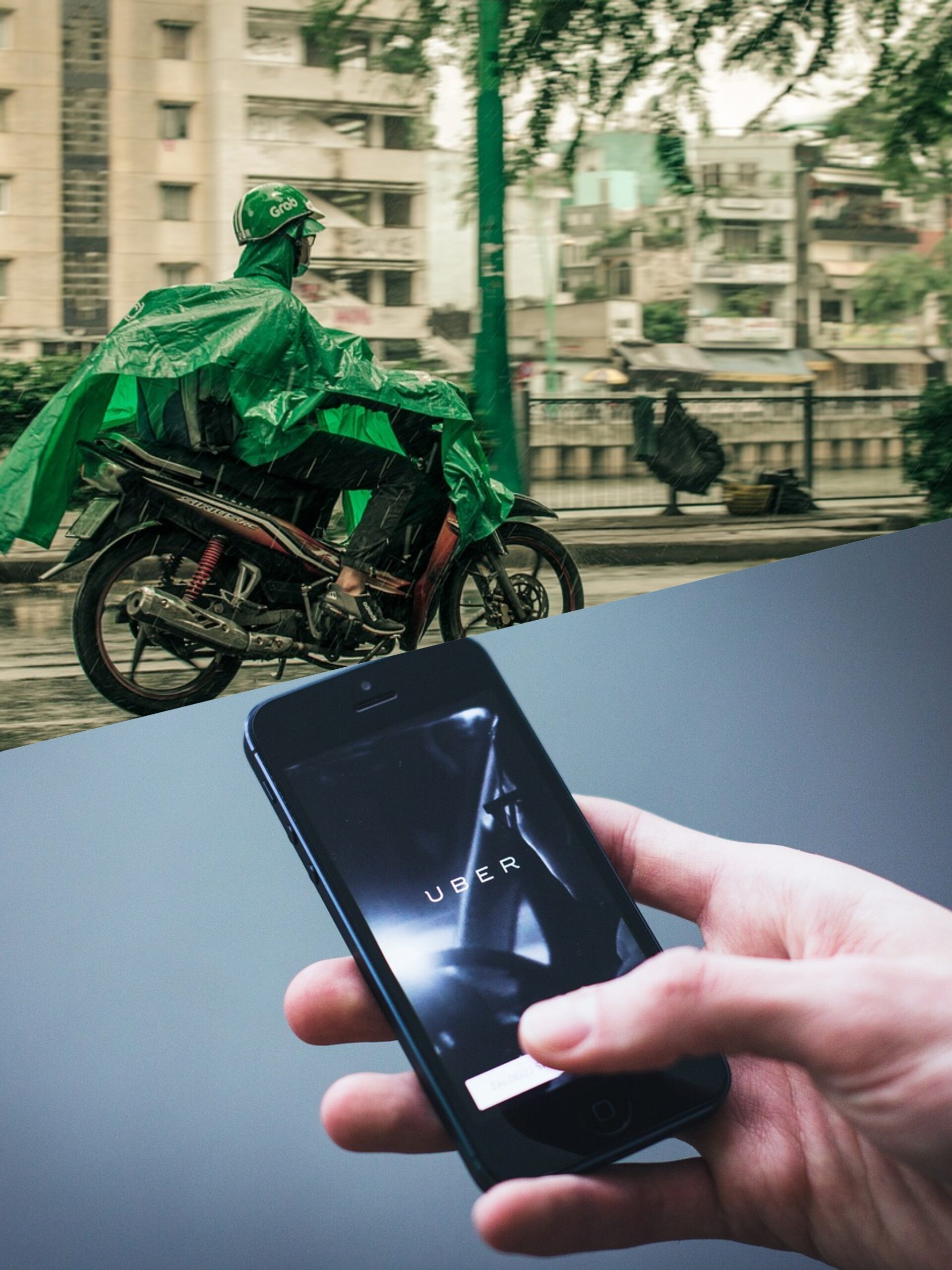Why did Uber lose to Grab in the market competition…
There is always competition in the market in any country. In the ride-sharing rental service industry, such as Coca Cola and Pepsi, Samsung and Apple, KFC and McDonald’s, this time I will tell you about the competition between Uber and Grab.
Before talking about their competition, I will tell you a little about each company.
Uber can be considered an Entrepreneurial company that invented the world’s first ride-sharing platform. Uber is an American company founded in 2009 by two founders, Travis Kalanick and Garrett Camp.
It is a Pioneer Company that started with the aim of making it easy for drivers and passengers to rent a car.
Grab was founded in Malaysia in 2012 based on Uber’s business model. At that time, Grab was just a small startup company compared to Uber.
a) Market Entry
Uber started in the US and in 2013, it entered the SEA market by launching in major cities like Singapore, Manila and Jakarta.
Grab entered the market in 2012 under the name “MyTeksi”. Then in 2014, it rebranded with the name we use now, Grab, and entered the SEA market significantly.
b) Market Entry
In Myanmar, Grab and Uber entered Myanmar at the same time. Uber entered in May 2017, while Grab started in March 2017.
c) Market Competition
Uber is a successful company in the Western world, but it could not compete with Grab, a startup company, in the SEA world.
What factors prevented Grab from surpassing it?
1) Lack of Localization
When we first arrived in Myanmar, I was more impressed with Uber and Grab. Because they are both American companies and have advanced technology, I was more impressed with Uber.
But in reality, there is only one Grab left in the market. Because the main difference between Uber and Grab is localization and not localization. These are…
2) Payment System
When Uber first arrived in Myanmar, the payment system was cashless. And its system was not based on the distance traveled, but on the meter, so it was not convenient for Myanmar or other SEA countries.
Grab understood this very well. Because of this situation, Grab’s payment system is cash payment, and it was the most convenient for SEA countries because it used a distance-based payment system.
The reason why Uber only uses a cashless system is because it did not want to use the “one-size-fits-all” system that is used in Western countries and use a regional trailer system. (To be honest, it is stubborn.)
3) Incentives and Promotion
Uber’s incentives for drivers are quite low compared to Grab. Another thing is that Grab did not offer promotions for passengers as much as it did. Therefore, Grab has come to SEA with promotions, incentives, and ways to attract customers.
Another advantage is Grab Pay and Reward Points.
d) Investment Amount
Although Uber is a big company, its investment amount is not even 1/10 of Grab’s. According to market research, Uber only spent $700 million in SEA, while Grab spent $4 billion. The reason why Grab was able to spend so much is because of the investment of Japanese giant SoftBank. Not only that, but also big companies with a background like Toyota have joined.
e) Win/Loss
Thus, the competition between Grab and Uber ended in 2018. Uber could not keep up with SEA’s cultural and localization, so it finally sold (27.5)% of its entire business to Grab and completely left the SEA region.
What lessons can be learned from the market competition between Grab and Uber…
-No matter how big a business is, if it wants to expand its market, it must be localized according to the region.
-When investing, you can’t be too strict to be ahead of your competitors.
-You should do more promotions and attract more users.
-Sometimes you can’t be stubborn in the market. You should change according to the region. There have been lessons learned from companies like Nokia that failed in the market because of stubbornness.
-You should have a unique selling point like Grab to be one step ahead of your competitors.
This is about the market competition between Grab and Uber. Now in Myanmar, Grab’s
Another competitor, FARY, has also emerged.
Whether FARY can drive Grab out of the Myanmar market, or whether Grab will buy FARY and monopolize the entire market like Alibaba bought Shop.com.mm, remains to be seen.If you found this useful, don’t forget to share it with others.
